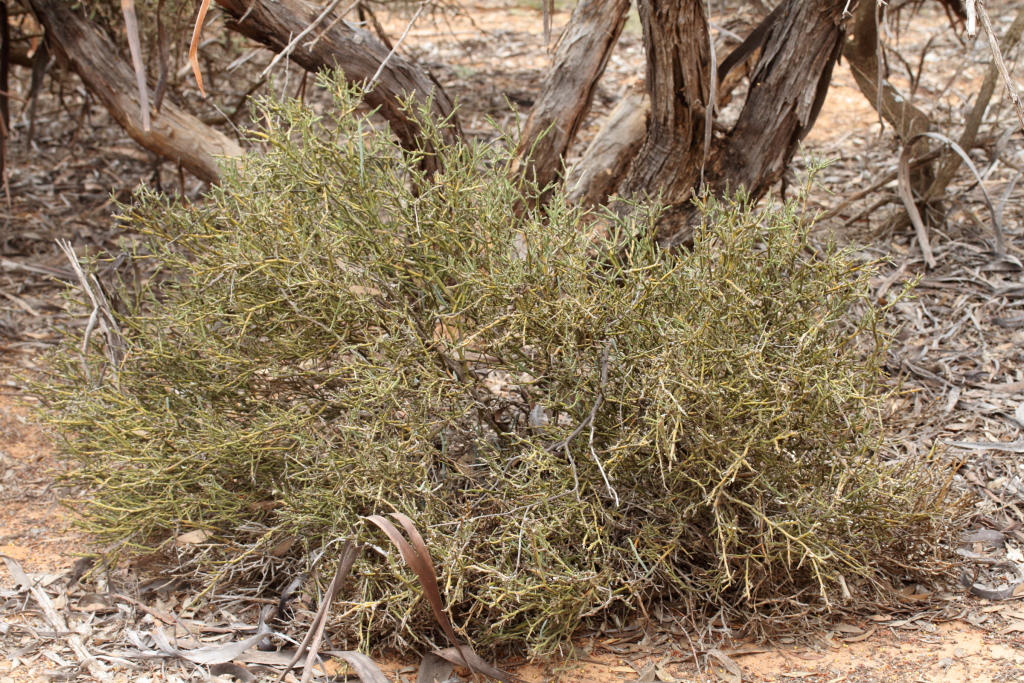Templetonia rossii
(F.Muell.) I.Thomps.Many-stemmed leafless shrub to 1.5 m high; branches green or yellow, distinctly flattened, 2.5–6 mm wide, faintly or distinctly striate, margins notched at nodes, often terminating in a short spine, glabrous to puberulous. Leaves reduced to minute scales to 1 mm long, with a mass of fine dark granular processes in the axils; stipules inconspicuous. Flowers mostly 1 or 2 per axil; pedicels glabrous, to 2 cm long; bracteoles ovate, papery, overtopping base of calyx; calyx glabrous except for a fringe of hairs on apices of lobes; ovary subsessile or very shortly stipitate, glabrous. Pods obliquely obovate or elliptic, narrowed to an acute lateral apical beak, 0.75–1.8 cm long, 0.4–0.75 cm wide, 1- or 2-seeded, valves coriaceous, dark brown, glabrous; seeds elliptic. Flowers Aug.–Sep.
LoM, MuM, Wim, VRiv, RobP. Also WA, SA, NSW. In Victoria confined to the north-west. Favours deep sandy soil in mallee and woodland communities.
 Spinning
Spinning

